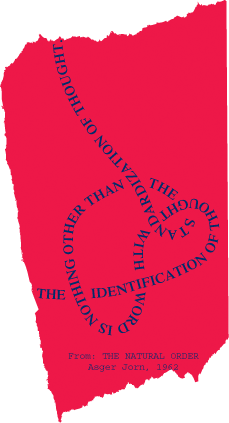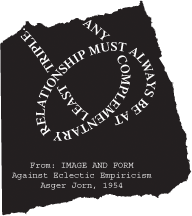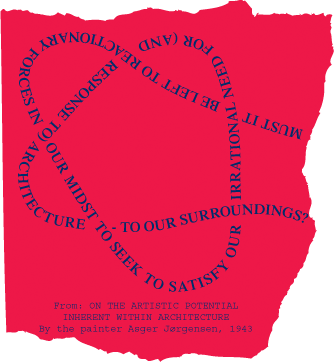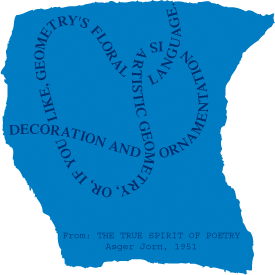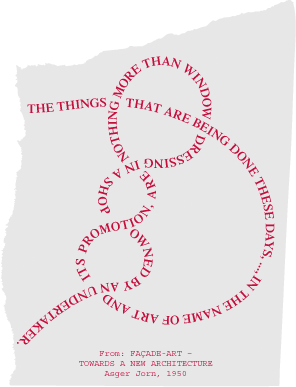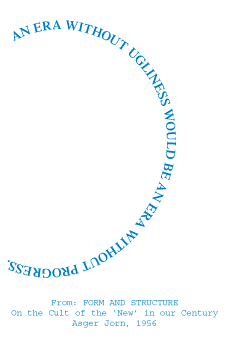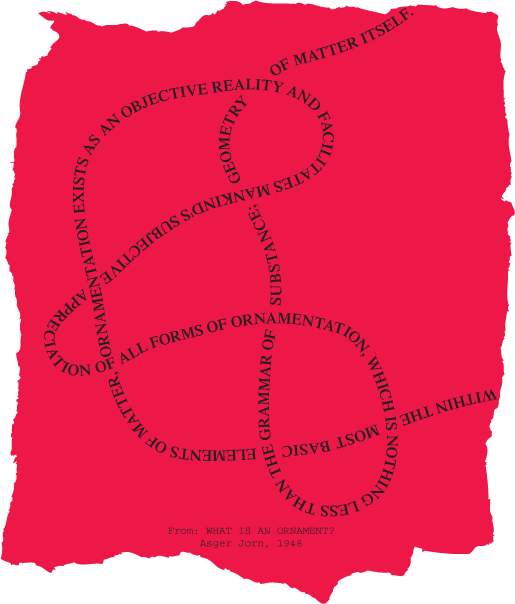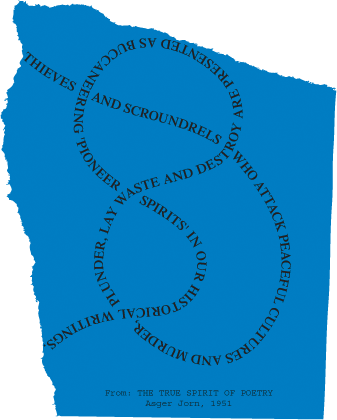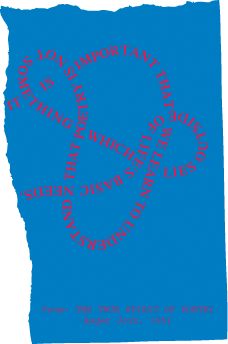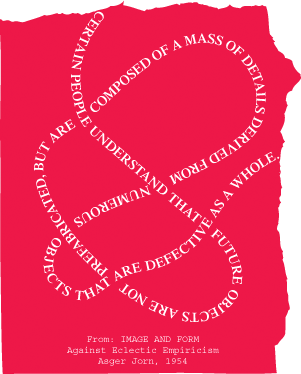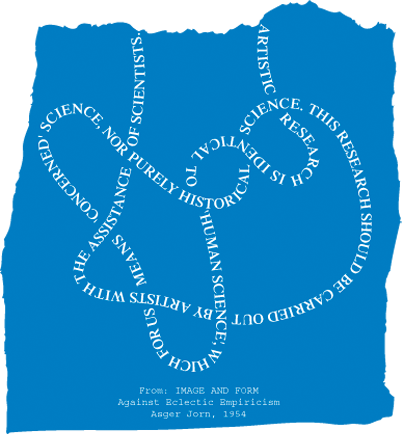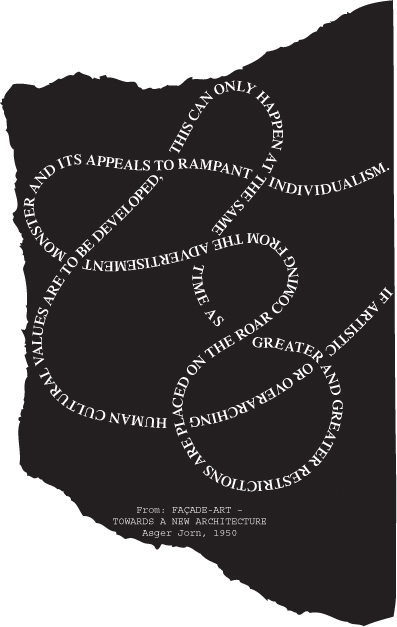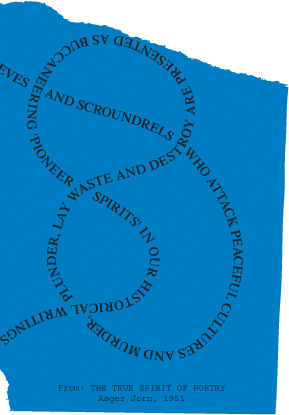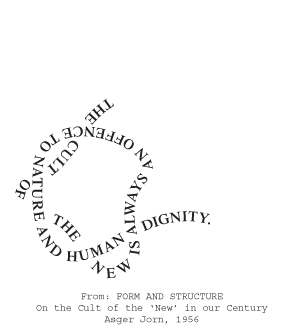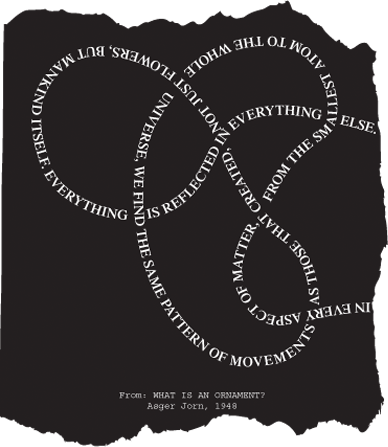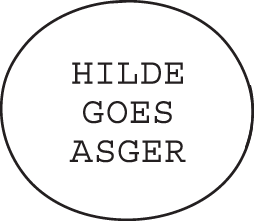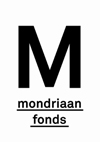INTERVIEW WITH MARTIN WOOSTER (II)
Martin Wooster is a philosopher who’s ‘Response to Asger Jorn’s ‘Value and Economy’ is published on this blog in the category of the same name. Below is the second part of a series of questions that his response raised with me, and which he generously agreed to answer.
HdB: You write that “If we consider modernity and its enlightenment concept of politics to be an ongoing crisis of attentiveness and of which the changing configurations of capitalism continually push attention and distraction to new limits and thresholds then one of the best ways to navigate such a condition might be in terms of a historical dialectic of boredom and distraction.” If we would go along with Jorn’s so-called ‘triolectic thinking method’ with which he had the intention to overcome the dual way of western logical thinking based on dialectics, then what could be a third element in “the historical dialectic between boredom and distraction?” Could I read your text in such a way that you are in fact proposing that art could be such a third element?
Another paragraph that I thought was interesting in relation to Jorn is where you write “How are we to practice a properly critical art towards culture? Obviously any such practice involves taking up a stance unafraid of the culture industry and its growing solidified operations and attitudes validated by prevailing forms of rationality.” Jorn once wrote: “When the aesthete reads a notice saying ‘The Ice is Unsafe’, for him it is a challenge not only to test whether the note is telling the thruth, but to try out what unsafe ice feels like. This is the precondition of aesthetics, development and progress: skating on thin ice.” (Asger Jorn, Held og Hasard. Dolk og Guitar). Art historian Helle Brøns phrased it very accrutaly when she wrote that “Jorn’s willingness to move into unknown territory, to make mistakes and renounce ordinary logic was both a specific artistic strategy for Jorn and a general attitute to life.”
What I find interesting is, that this attitute is not only reflected in the physical outsome of his work, but also the way that he dealt with what in his time could have been called ‘the creative industry’. For instance when he was awarded a Guggenheim Award in 1964 he send a telegram to the president of the Guggenheim saying:
GO TO HELL BASTARD—STOP—REFUSE PRIZE—STOP—NEVER ASKED FOR IT—STOP—AGAINST ALL DECENCY MIX ARTIST AGAINST HIS WILL IN YOUR PUBLICITY—STOP—I WANT PUBLIC CONFIRMATION NOT TO HAVE PARTICIPATED IN YOUR RIDICULOUS GAME.
MW: In my original text it is true that I was making a case for the dialectic and to do so I used the dual terms, boredom and distraction. The principal reason for this decision was that these terms effectively allow one to concentrate on the issue of time, important because we might reasonably argue that the category of time is the deep structure of what capitalism has become. The question I had begun to explore was, what will allow us to deactivate, suspend and transform the present movement of time?
If time has come to be dominated by the fact that production and consumption follow each other in a faster and faster cadence, only diminishing our capacity to think, then what will allow us to grasp time more fully? Since time is itself a plenitude and a possible serenity but only for Jorn if this necessitates that it be less blind and more ludic because time should belong most fully to artistic people determined to be set free from the rectilinear progression of humanity – the march of historical materialism in which everything is played out in advance. In returning to Jorn’s notion of grace, of which he will colour by reintegrating it with the myths of people ‘outside history’, we grasp his attempt to throw our image of the world out of focus, to distend it and draw it towards a world of non-coincidence, of silence, of space and depth and all that is bound to dislocate thought.
This might also be what Jorn considers a necessary move to suspend the future, to concern our thoughts more fully within the already present and thus think a more profound relationship between subject and object. Yet this is something continually overlooked because we are always looking to an impossible future as entrapped by a totality we have already fashioned in advance. As such we should also be reminded of the Belgian writer and philosopher Raoul Vaneigem who said that revolution has to be implemented in the way we live, to be enacted as a kind of political-aesthetical act that is less an exodus but more an exorcism of all our feelings for commodities. Indeed he reminds us that the political left will continually let itself down if it forgets the necessity of aligning itself with art in the struggle against capital’s colonization of the future.
If bourgeois thought according to Marx sought to rise from the particular to the universal our task, given that our lived world is one completely structured by an ideology that leaves the value of money as a living communicator to strip the living of time and souls, is to rise from the universal to the concrete. In considering the category of time we may also grasp a sense of the future not without influence in the past, which determines to the same extent that it is determined by it. Of course this is only made possible in the present, in an immediate rapport with the totality of time in the here and now. Hence the importance attached to boredom and for it philosophically to become associated with the modality of possibility. Heidegger talked of a ‘profound boredom’ as the feeling of possibility itself, and of which we might add to its importance by it surely being one of the temporal forms of the experience of abstraction.
One of the ways we can grasp this shift that thought has to undergo to make renewed sense of our world is through dialectical thought. From the 1990’s onwards Jameson persuasively argues that the social space has become completely saturated by a homogeneous image of culture and therefore he maintains an urgent shift to a more dialectical mode of thought is necessary. Maintaining that the dialectic had never been fully realized in its full potential because it had failed to properly grasp the paradox of a world of constant changeability but nevertheless starved of ideas offering real alternatives.
Jameson argued that we needed to change the very principle of change itself, which only becomes possible within a truly contradictory mode of thought. Hence the need to grasp the inertia of the old and the rise of the new as equally important to properly enact a dialectical mode of thought as manifested in a fuller notion of repetition. As such we may conclude that where the system becomes stuck by the persistence of the old beyond all possible usefulness is and remains the only possible site for the rise of the new.
For sure the dialectical mode of thought takes on a tragic complexion, certainly more tragic than the poor man’s version of Hegel’s thought that unable to deepen the dualisms ends up simply mediating a compromise between them and us but doing little to change its basic structure. We might like to think we are unified subjects and that the problems we face are representational and thus relatively easy to think through but unless we undo this figure of the unified subject and see the contradictions and multiplicities behind what allows this figure to be constructed – only then are we really thinking dialectically. Clearly what needs to be seen is no longer visible for as Marx long ago wrote, “the riddle of the money fetish is therefore the riddle of the commodity fetish, now become visible and dazzling to our eyes.” Therefore it seems essential that we render ‘inoperative’ the existing idols of thought and such movements of consciousness that may not be materially divided so as to rupture the system of empirical possibility and its self-declared ‘objective’ intelligibility.
In turning to the production of art and of which we might ask that it carry a privileged position as that third element capable of deepening the boredom-distraction dialectic is to affirm the material, the concrete and the sensory dimensions of experience. Yet however prepared and precipitous the work, when something more difficult is asked, something that will necessarily lead artists to being pulled in directions they only half understand and into places outside, other, beyond their control, I think only then should we be unafraid to acknowledge such activities as attempts to reawaken the hostility between society and culture rather than placating it with pseudo-political products for self-indulgent consumption. In this respect Jorn’s idea that the artist needs to “skate on thin ice”, in order to properly test the dangers of the non-teleological ground is very fitting. Not least because it opens the non-coincidence between thought and being and as in Coleridge’s “willing suspension of unbelief” welcomes what then becomes of ‘materiality’ itself.
If we take Nietzsche’s theorem of the Übermensch as his necessity for contemporary culture to invent a system of education and self-education that might be capable of producing individuals fit enough for solving its impending problems then surely this will also be a matter of enacting a society able to leave possibilities unused. Equally if art lifts into the light the social limit of freedom so as to be perceived then just as with any meaningful sense we give to the notion of utopia, we need to recognize such places as essentially insoluble and uninhabitable.
Therefore I argue it is less a matter of going head to head with capital, I’m sure it would love nothing more, instead individual’s need to find subtractive protocols that are every bit as corrosive as money. In giving way to a universality that remains critically incomplete means abiding by an aesthetics of the local, the in situ and is properly sensitive to places and moments. Indeed, such an idea of aesthetics wholly depends on thinking against the constituted self so as to open gestures of placing, inscribing and inserting a mark as being the only way to prolong both the saliences of work and life. If in following the path we make for ourselves as we walk along it, it could turn out that revaluing the values and remaining loyal to the earth are tasks that amount to the same thing.
